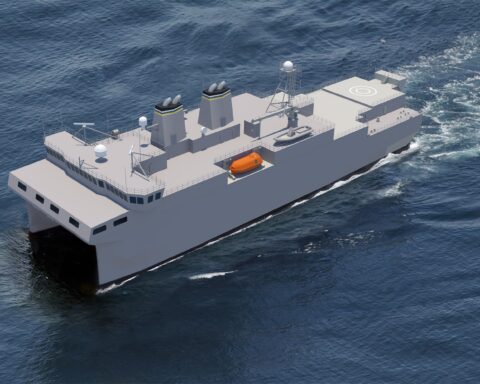The following is the July 3, 2018 Congressional Research Service report, Navy Frigate (FFG(X)) Program: Background and Issues for Congress.
From the report:
The Navy in 2017 initiated a new program, called the FFG(X) program, to build a class of 20 guided-missile frigates (FFGs). The Navy wants to procure the first FFG(X) in FY2020, the second in FY2021, and the remaining 18 at a rate of two per year in FY2022-FY2030. The Navy’s proposed FY2019 budget requests $134.8 million in research and development funding
for the program.
Although the Navy has not yet determined the design of the FFG(X), given the capabilities that the Navy’s wants the FFG(X) to have, the ship will likely be larger in terms of displacement, more heavily armed, and more expensive to procure than the Navy’s Littoral Combat Ships (LCSs). The Navy envisages developing no new technologies or systems for the FFG(X)—the ship is to use systems and technologies that already exist or are already being developed for use in other programs.
The Navy’s desire to procure the first FFG(X) in FY2020 does not allow enough time to develop a completely new design (i.e., a clean-sheet design) for the FFG(X). Consequently, the Navy intends to build the FFG(X) to a modified version of an existing ship design—an approach called the parent-design approach. The parent design could be a U.S. ship design or a foreign ship design. The Navy intends to conduct a full and open competition to select the builder of the FFG(X). Consistent with U.S. law, the ship is to be built in a U.S. shipyard, even if it is based on a foreign design. Multiple industry teams are reportedly competing for the program. Given the currently envisaged procurement rate of two ships per year, the Navy envisages using a single builder to build the ships.
The FFG(X) program presents several potential oversight issues for Congress, including the following:
- whether to approve, reject, or modify the Navy’s FY2019 funding request for the program;
- whether the Navy has accurately identified the capability gaps and mission needs to be addressed by the program;
- whether procuring a new class of FFGs is the best or most promising general approach for addressing the identified capability gaps and mission needs;
- whether the Navy has chosen the appropriate amount of growth margin to incorporate into the FFG(X) design;
- the Navy’s intent to use a parent-design approach for the program rather than develop an entirely new (i.e., clean-sheet) design for the ship;
- the Navy’s plan to end procurement of LCSs in FY2019 and shift to procurement of FFG(X)s starting in FY2020;
- whether the initiation of the FFG(X) program has any implications for required numbers or capabilities of U.S. Navy cruisers and destroyers.
via fas.org





